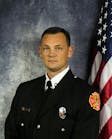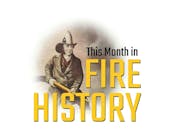As Firehouse Sees It: Worcester 6: Let Their Sacrifices Not Be in Vain
The page that I received one chilly night in December 1999 still is burned into my mind 25 years later. I was at dinner when I received the news alert about a major warehouse fire in Worcester, MA, where multiple firefighters were missing. I spoke to Firehouse.com founder Dave Iannone to make sure that he and his staff were aware of the fire. Little did we know that the largest loss of firefighters in a decade was unfolding at the Worcester Cold Storage building.
The tragedy that unfolded that night continues to affect the fire service more than two decades later. Many operational changes were implemented over the years, from incident command and accountability to communications and strategies and growth in rapid intervention strategies. So much innovation has been made in the fire service since the findings from Worcester’s tragedy, too, including the capability to make thermal imaging cameras more affordable, improved radio communications, and longer on-air SCBA worktimes coupled with earlier low-air warnings.
One critical task that was borne from this fire was the need to be able to locate missing or unconscious members. Unfortunately, the ability to pinpoint a downed firefighter who is inside of a building still isn’t widespread, but efforts continue.
The tragedy sparked a training revolution by which training events were organized to help raise funds for the fallen members’ families, while those who were involved could pass forward their lessons to prevent future pain in tragedy.
Because this issue of Firehouse hits the streets as the U.S. fire service will pause to remember Paul Brotherton, Timothy Jackson, Jeremiah Lucey, James “Jay” Lyons, Joseph McGuirk and Thomas Spencer, this column runs with the November issue. I commend the seven sons of those who lost their life in 1999, having followed in their father’s footsteps by joining the department, as well as those who stepped up to watch over them and help keep the memories of their fathers alive.
Please set some time aside to read the findings and recommendations reports on Dec. 3. That is the greatest honor that you can show them—that you will remember their sacrifices.
Station Design Awards Accolades
For the 11th consecutive year, Firehouse presents its Station Design Awards in this issue of the magazine.
After reviewing the submissions during the editing process, it was encouraging to see how many fire departments—and the architects they work with—continue to focus on the firefighters who use the stations as well as the apparatus and equipment storage. The ability to leave the physical effects of emergency scenes in the apparatus bay and efforts to shed the mental effects of incidents throughout the living areas represent tremendous progress.
Via the addition of spaces that host community events and the increase in built-in triage, medical care and expansive training spaces—to reduce out-of-service time by allowing members to train in house—stations are becoming much more than the “fire truck garages” that they were considered last century.
I really was struck by the nomination for Overland Park, KS, Fire Station 48. The state-of-the-art fire station, which was built on a high school campus, is designed to facilitate a high school fire science program, taking the design concept and recruitment process to a new level. I applaud the foresight of the school district to help to engage youngsters as well as the department’s willingness to locate a busy fire station on campus, all to help to bring future generations of the fire service into the stations early. Imagine the effect of apparatus rolling out of the bays and of firefighters training on those students who are contemplating their future career choices: Seeing firefighters in action at a young age historically has served as inspiration and led to some of the best in the ranks.
Review all of the nominees here.
Congratulations to all of the departments and architectural firms on receiving these coveted awards.

Peter Matthews | Editor-in-Chief/Conference Director
Peter Matthews is the conference director and editor-in-chief of Firehouse. He has worked at Firehouse since 1999, serving in various roles on both Firehouse Magazine and Firehouse.com staffs. He completed an internship with the Rochester, NY, Fire Department and served with fire departments in Rush, NY, and Laurel, MD, and was a lieutenant with the Glenwood Fire Company in Glenwood, NY. Matthews served as photographer for the St. Paul, MN, Fire Department.






